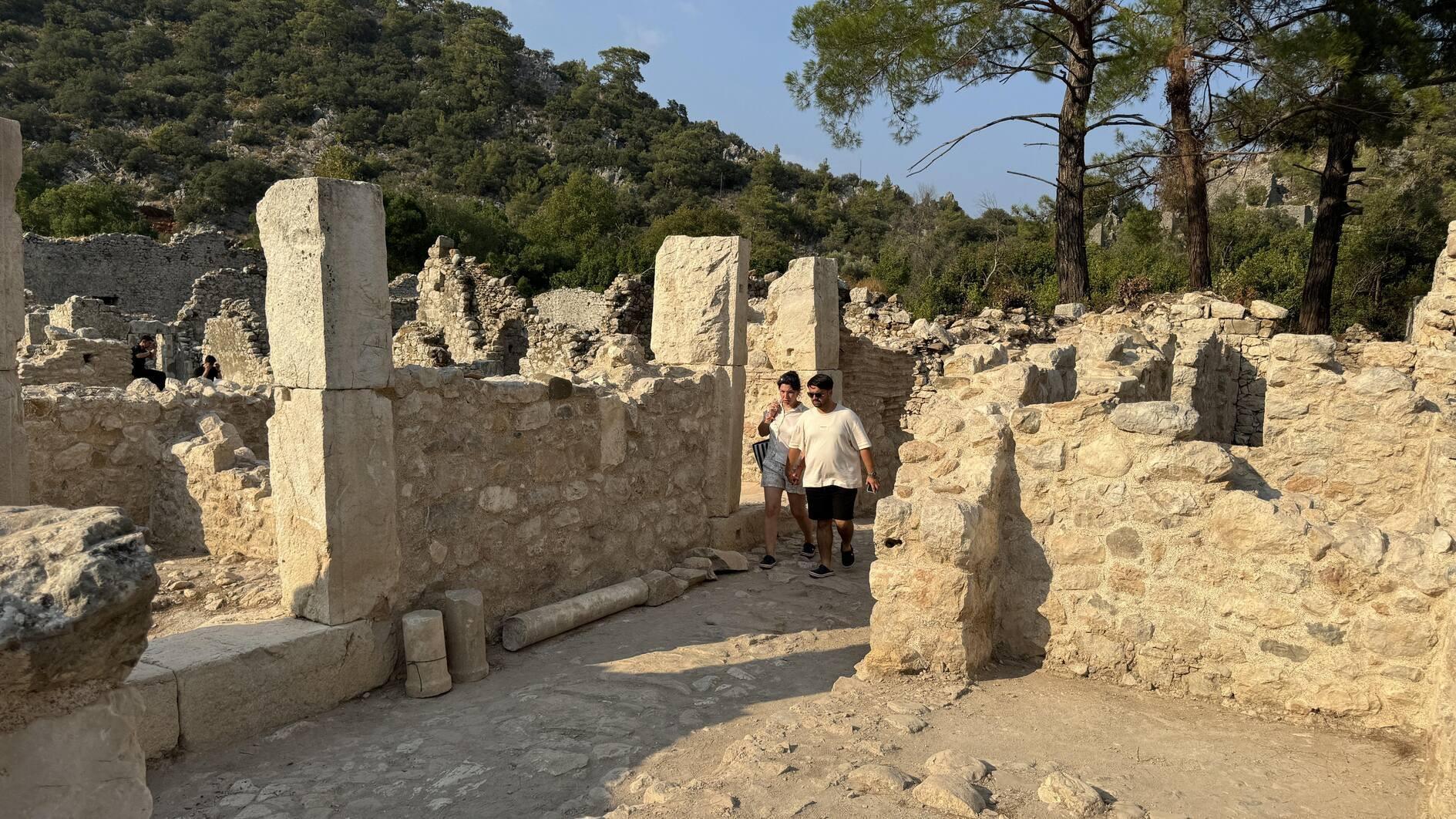
Located in the Kumluca district of the tourism hotspot of Antalya, the ancient city of Olympus seamlessly combines historical allure with coastal charm, featuring rich historical ruins alongside a picturesque beach.
Mentioned on the Lycian Union coins minted in 167-168 B.C. and bearing traces of the Hellenistic, Roman, and Byzantine periods, Olympos is taking on a new appearance with the excavations that have continued since 2006 and gained momentum in recent years.
The ancient city, where structures such as churches number 1 and 3, the entrance complex, the Episcopal Palace, the bridge, the Lyciarkes Marcus Aurelius Archepolis Monumental Tomb, the mosaic structure, the Antimakhos Sarcophagus and the Port Monumental Tombs have been so far discovered, draws the attention of both local and foreign tourists.
The ruins of Olympus that have survived to this day are located at the mouth and on both banks of a river flowing into the sea from east to west.
The temple gate, located 150 meters west of the river mouth, is one of the visible structures in the city. The sarcophagus of Captain Eudomus, which has been unearthed during excavations, is the most interesting one among the ruins.
There is a relief of a ship on the sarcophagus, positioned in a rock cavity right next to the river mouth. The ship has no sails, masts or oars and has a relief of Aphrodite on the back.
Harbor Monumental Tombs and mosaic structure
Another popular attraction for both local and foreign tourists is the vaulted monumental tombs known as the "Port Monumental Tombs," which were unearthed during the rescue excavations carried out by the Antalya Archaeology Museum.
The first Harbor Monumental Tomb consists of a sarcophagus placed on a high podium in a room carved out of the main rock. The second of the Harbor Monumental Tombs is also located in a two-story space carved out of the main rock.
Another notable historical artifact in Olympus is a mosaic structure. The floors of all the spaces in the structure are covered with mosaics. The two-story place, which is believed to have been used as a civilian residence, is quite rich in terms of decoration with mosaic and brick workmanship.
The mosaic pieces seen on the surface appear to have fallen to the ground floor because of the collapse of the second floor. The ground floor mosaics feature animal figures such as water birds, fish, goats, rabbits and dogs within geometric borders. The mosaics are dated to the end of the third century and the beginning of the fourth century A.D., according to their stylistic features.
The second-floor mosaics also feature animal figures within geometric borders. These mosaics date from the late fifth century to the early sixth century A.D.